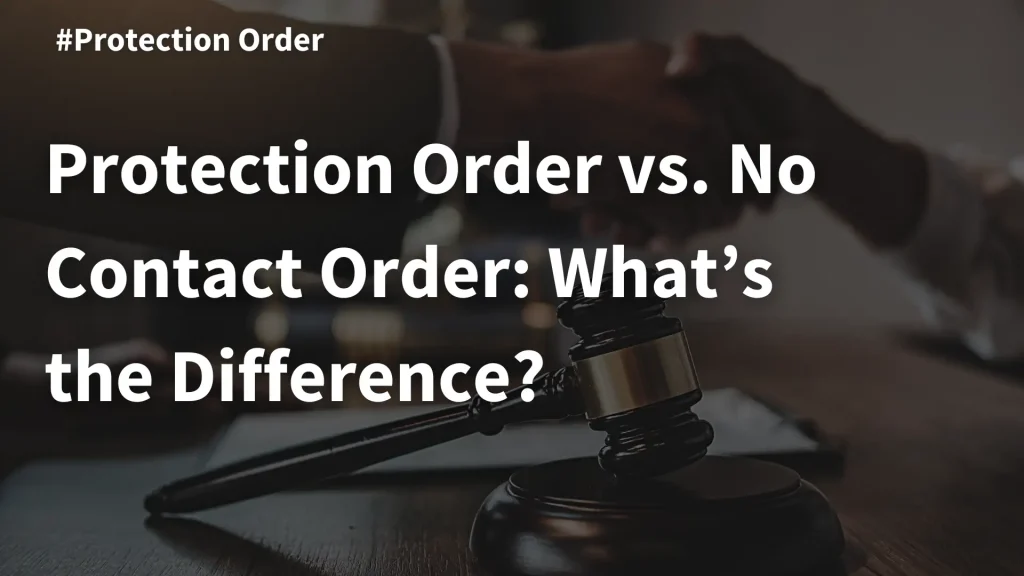
When a spouse, family member, or dating partner commits an act of violence, abuse, or harassment against you, you may seek help from the court to obtain protection against future acts. Depending on the circumstances of your situation, you may simply want your abuser or harasser to refrain from contacting you; alternatively, you might seek additional protection in a court order. Does Texas law distinguish between a protection order vs a no-contact order?
Understanding Protection Orders and No Contact Orders
Under Texas’s Family Code, a person may seek a protection order after suffering from family violence. The law defines family violence as an act by a family or household member against another member of the family or household intended to cause physical harm, injury, assault, or sexual assault or threaten the victim to cause them to fear imminent harm or assault. Family violence also includes abuse toward a family or household member or child or dating violence. Dating violence occurs between people who have or had a dating relationship or marriage that results in harm or injury or threatens the victim with imminent physical harm or assault; dating relationships include any continuing relationship of a romantic or intimate nature.
What a Protection Order Does
In a protection order, the court can subject the party who committed family violence to various requirements and restrictions, including:
- Completing a battering intervention and prevention program
- Refraining from committing future acts of family violence
- Refraining from communicating directly with the person(s) protected by the order or a member of that person’s family or household
- Refraining from making threats to any person protected by the order or the protected person’s family or household members
- Refraining from going to or near the residence or place of business or employment of the person protected by the order or a member of their family or household, or going to or near the residence, school, or childcare facility of a child protected by an order
- Refraining from conduct toward a person protected by an order or a member of their family or household that likely will harass, annoy, alarm, abuse, torment, or embarrass
- Surrendering and refraining from possession of any firearm unless the party works as a sworn, full-time peace officer of an agency of the state or a political subdivision
- Refraining from harming, threatening, or interfering with any pet, companion animal, or service animal owned by the person protected by the order
- Refraining from tracking or monitoring any vehicle or personal property owned or possessed by the person protected by the order of a member of their family or household, whether through physically following or using an electronic tracking device
Protection orders can also prohibit parties from removing a child from a parent’s custody or the court’s jurisdiction or disposing of or encumbering the parties’ jointly owned property. Orders can also give a protected person exclusive possession of a jointly owned or occupied residence and require a party to make child support payments.
Temporary vs. Final Protection Orders
A court may issue a temporary protection order that stays in effect until the court can conduct a hearing to determine whether to issue a final protection order if the court finds that a party committed family violence against a family or household member or a person with whom the party has or had a dating relationship. A final protection order can last up to two years. However, courts can extend this deadline in cases where the person subject to the order’s restrictions spends time in incarceration or commits a felony offense when violating the order.
Is There a Difference in a No Contact Order vs. Protection Order?
Texas law recognizes no difference between protection and no contact orders. In a protection order, the court can order a person who has committed family violence not to communicate with their victim or another member of the victim’s family or household or to approach the residence, place of employment, or business of the victim or a member of the victim’s family or household. These no-contact provisions reduce the risk that a person who has committed family violence may commit future acts of violence against a victim or their family or household.
Consequences of Violating Protection and No Contact Orders
Under Texas law, violating a protection order can result in the court imposing various penalties and other consequences. A person who violates a protection order may face contempt proceedings, which can lead to penalties such as a fine of up to $500, six months in jail, or both. Violating a Texas protection order also constitutes an offense that carries penalties, including a fine of up to $4,000, up to 12 months in jail, or both. A person who violates a protection order by committing a new criminal offense may also face prosecution and separate penalties if convicted, with the law imposing a mandatory minimum two-year prison sentence for felony offenses.
Modifying and Terminating Protection and No Contact Orders
Either party may petition the court to modify or terminate a Texas protective order. A protected party can ask the court to include a requirement or restriction in the order that the court could have initially included in the order. Conversely, a person subject to a protection order can ask the court to exclude any or all items included in the order. However, the protected person may not modify the order to extend it beyond the second anniversary of the issuance of the order or the order’s stated or statutory expiration date, whichever occurs later. A person seeking relief from the restrictions of a protection order typically must demonstrate to the court that the protected party no longer requires the challenged restrictions for their continued protection.
Contact an Experienced Family Law Attorney to Discuss Your Legal Rights and Options
When you need protection or no contact order to prevent a family member, partner, or another person from harassing, stalking, or abusing you, let the Austin protective order attorneys at Smith & Bledsoe Family Law guide you through your legal rights and options. Contact our law firm today with (512) 277-3166 or through our online form for legal counsel and a free case evaluation to discuss how our firm can help you secure a protection or no-contact order in Texas. Check out the legal team and our success stories to gain the confidence to trust us with your case.
Related Posts:
Can You Appeal a Divorce in Texas?
What Are My Chances of Winning an Appeal in Family Court?
How Long Does a Restraining Order Last in Austin
